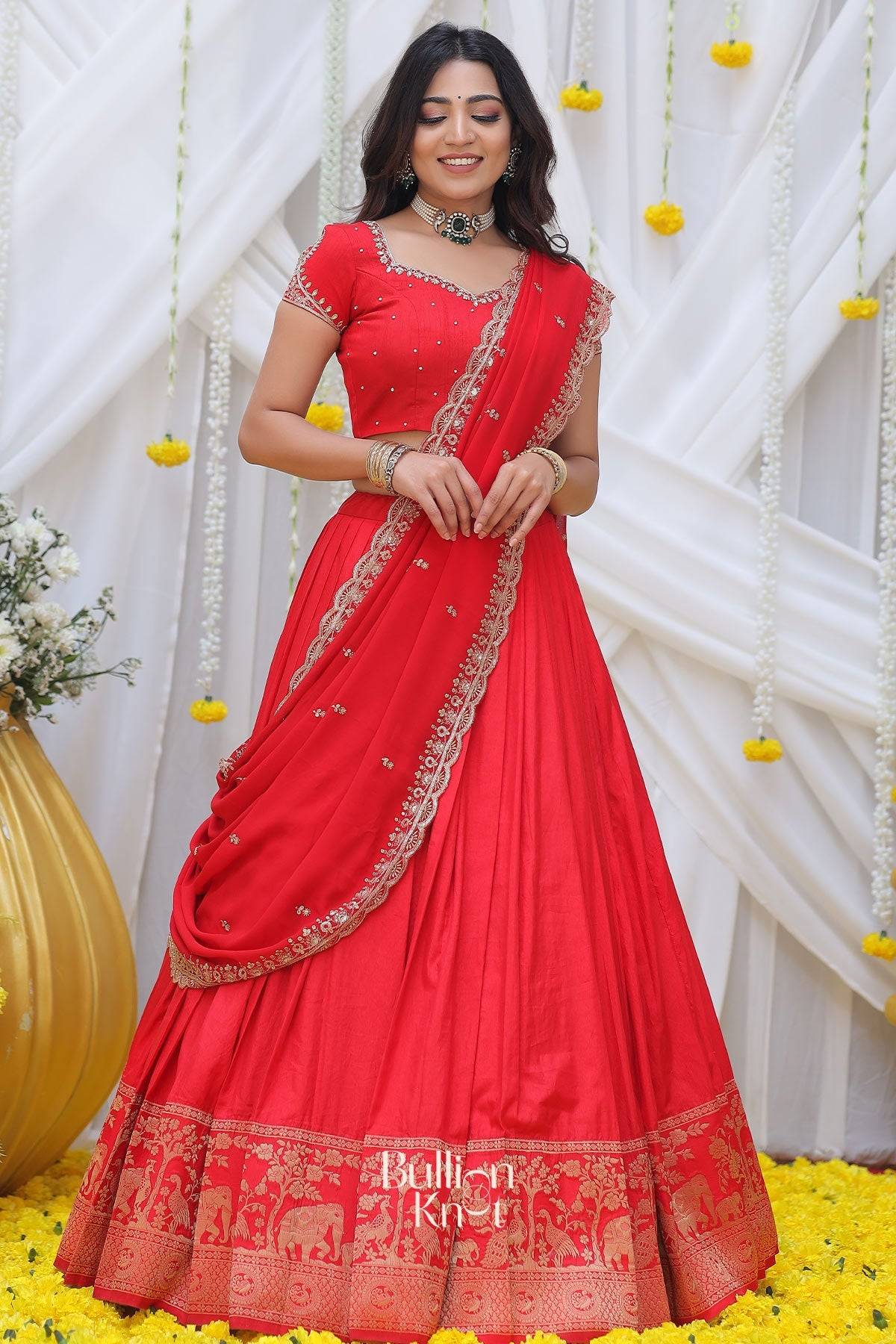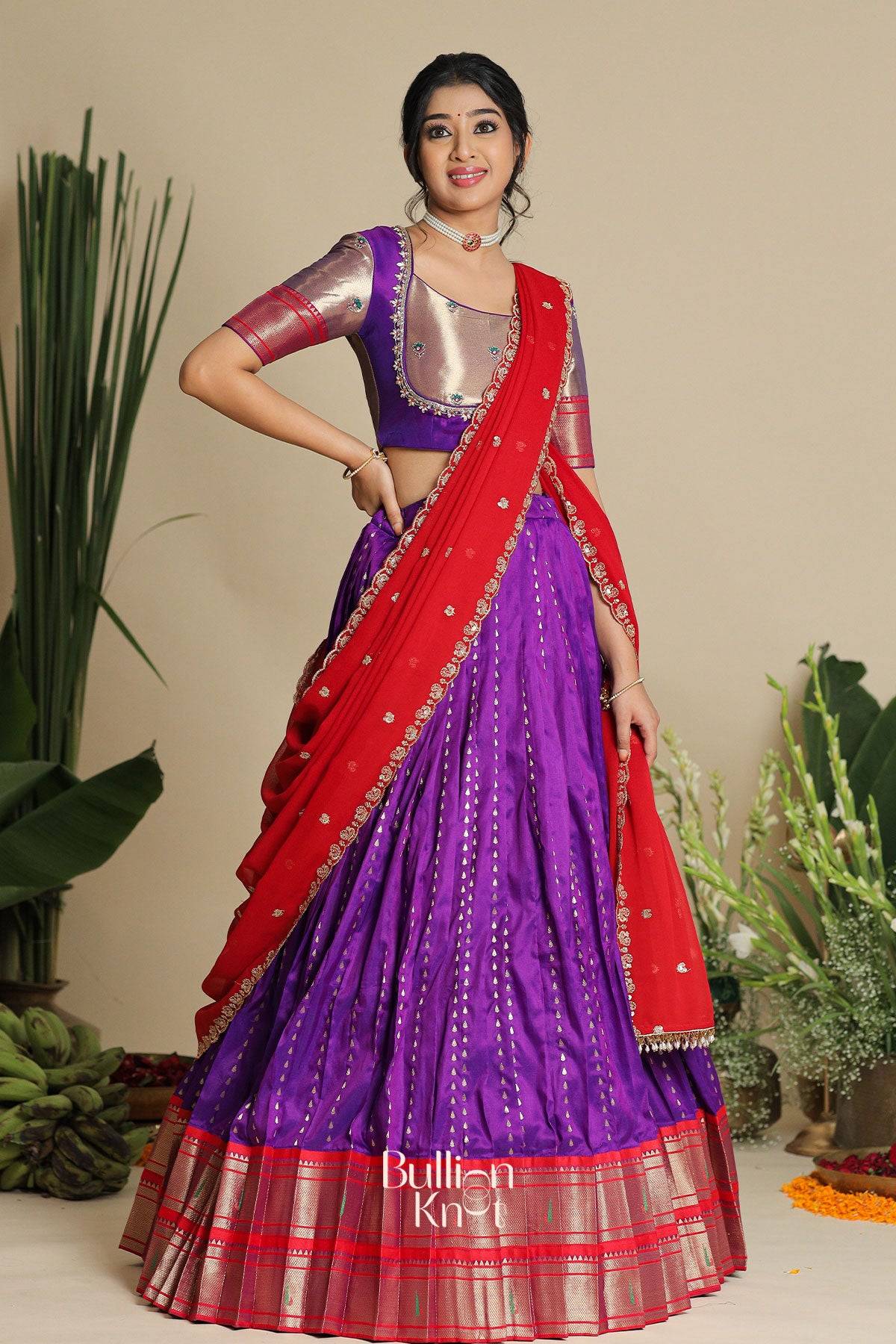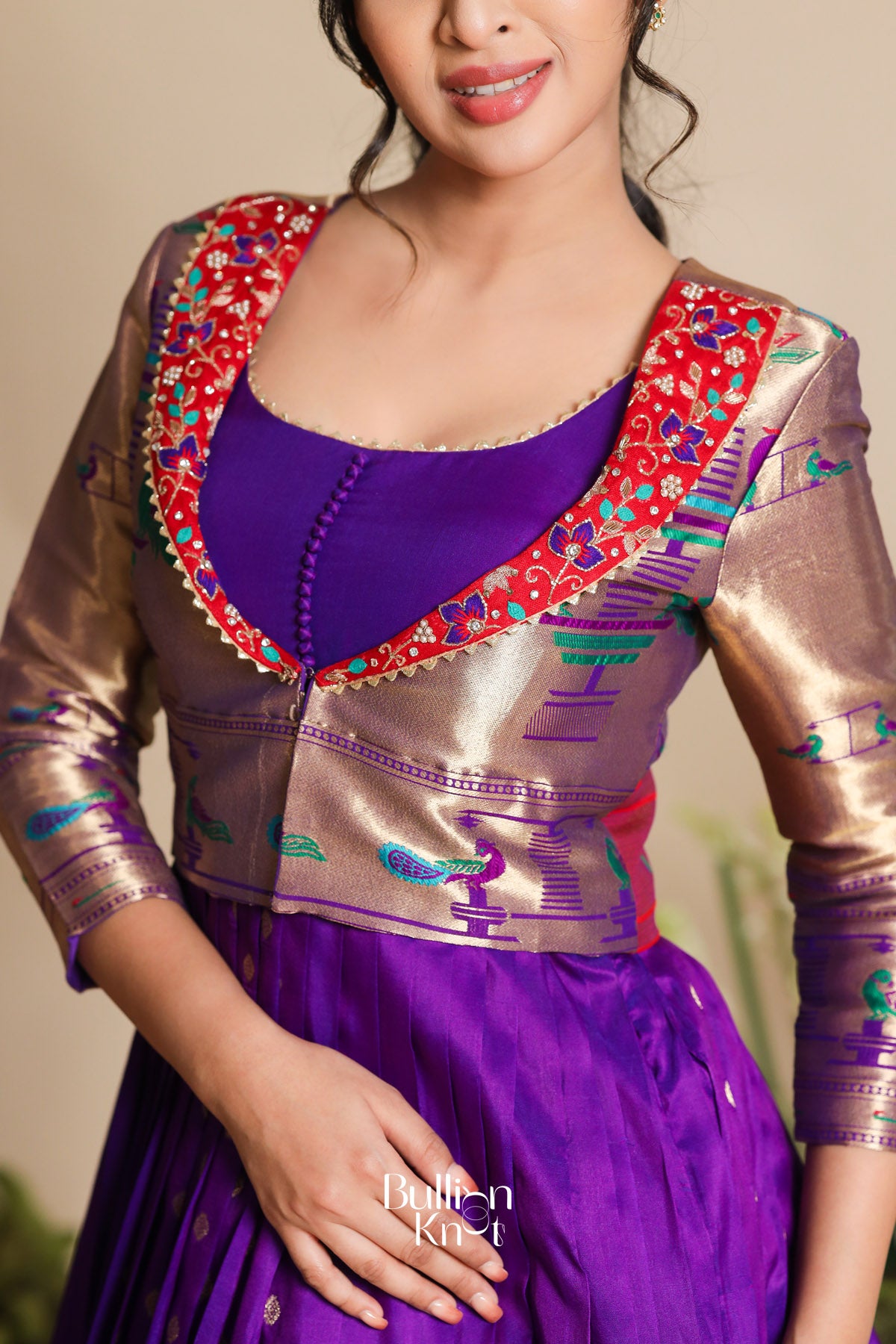Have you ever felt fascinated by the charm of tradition and rich cultural heritage? The kind of joy that wraps you in its elegance and leaves you feeling deeply connected to your roots? Well, if there's one thing that perfectly symbolises the essence of India's glamorous heritage, it's the beautiful world of designer ethnic wear.
India, with its myriad art forms and age-old traditions, has inspired the world, always! Our country proudly boasts a treasure of diverse cultures, and among the most cherished aspects is our traditional dresses worn in India.
They are not just outfits but an expression of our identity, embracing the legacy passed down through generations. These time-honoured Indian wear often draw inspiration from various art forms, weaving stories of our past into their intricate designs.
And among the countless mesmerising Indian wear , there's one that stands out for its sheer artistic brilliance - Kalamkari. This stunning art form has intricate designs, rich colours, and attention to detail making it an absolute delight for anyone who appreciates the beauty of traditional craftsmanship.
Diving into the Past: The Origins of Kalamkari
Before being used for making ethnic wear for women , the history of Kalamkari goes way back to ancient times when painted fabrics were seen during the Indus Valley Civilisation. But it was in the 8th century AD that this art form truly blossomed. What's fascinating is that during this time, wandering minstrels played a significant role. As these minstrels passed on religious traditions and tales from Hindu mythology through storytelling, Kalamkari became a valuable way to illustrate the tales with beautiful pictures.
Further, this art form was used to bring scenes from revered texts like the Mahabharata, Ramayana, and Bhagavatam to life. It also found a special place in temples where its splendid artworks adorned the walls, creating mesmerising backdrops that exuded the essence of the divine. This art form flourished in these sacred spaces and left a lasting impression on India's religious and cultural heritage.
Later on, the Golconda Sultanate and the Mughal rule on the Coromandel coast recognized the immense potential of Kalamkari. They organised special workshops, where talented artisans, lovingly known as 'Qalamkars,' crafted fabric art using pens. With the support of royalty, Kalamkari thrived and became an integral part of India's cultural heritage.
Further, when the British arrived in India during the late 17th and 18th centuries, they were enchanted by the beauty of Kalamkari, which they affectionately called 'Chintz.' This fabric quickly became the top choice for trade and gained popularity in England and France. People loved it because it allowed them to wear and decorate their homes with colourful, intricately patterned fabrics similar to silk, but at a more affordable price.
This is when Kalamkari entered the fashion industry and was used in making different styles of dresses. Moreover, the demand for chintz sparked a unique trading system. Bullion (precious metal) was sent to India in exchange for this highly desired fabric. Then, the chintz was taken to Indonesia, where it was traded for spices. These spices, along with the remaining chintz, were later sold to other countries in exchange for more bullion. Thus, this clever triangular trade played a significant role in making the East India Company very powerful, eventually leading to their rule over India, surpassing the authority of the Mughals.
But, how actually is the Kalamkari Dress Material made?
Picture this: cotton cloth, dried unripe fruit, milk, charcoal sticks, black kasimi liquid, alum solution, and vibrant natural pigments in red, indigo, and yellow. These simple yet powerful ingredients work together like magic to create the Kalamkari!
But wait, there's so much more to discover about this ancient art form. Crafting a Kalamkari dress is no easy task; it's a masterpiece created through 23 meticulous steps. The fabric is treated with care, bleached, softened, and left to bask under the sun. The natural pigments are carefully prepared and mixed with utmost precision. Each colour is applied by hand, one by one, and the fabric is gently rinsed after each application.
Further, Kalamkari comes in two styles - Srikalahasti and Machilipatnam. In Srikalahasti, the artisans follow a traditional technique of delicate hand drawing and painting. Every stroke they make speaks volumes of their artistic mastery, creating a canvas that comes alive with its own stories. Meanwhile, in Machilipatnam, a captivating fusion of skills happens as hand block printing blends harmoniously with hand painting, resulting in an awe-inspiring masterpiece.
Both styles embrace the beauty of natural vegetable dyes, but they do it in their own distinctive ways. Srikalahasti captures our attention with vibrant and lively colours, while Machilipatnam gracefully dances with a mono palette, bringing a subtle elegance to their art.
When it comes to motifs, Machilipatnam draws inspiration from the Mughals, displaying intricate floral patterns that transport us to a royal garden. Srikalahasti, on the other hand, carries forward the rich Hindu tradition by depicting religious iconography that's deeply rooted in spirituality.
Buy the best kalamkari dress online at Bullion Knot
Are you tired of searching for the perfect Kalamkari dress online ? Well, your quest ends here!
At Bullion Knot, we take immense pride in manufacturing the finest Kalamkari dresses, following traditional techniques that beautifully showcase the essence of Indian culture and tradition. Each Kalamkari dress material is thoughtfully designed to reflect the rich heritage that we all cherish. Be it the graceful cotton Kalamkari long frocks or the regal Kalamkari pattu dresses , we offer an array of choices that'll leave you enchanted.
However, our collection doesn't end with Kalamkari dresses alone. At Bullion Knot, we cater to all your Indian ethnic wear needs. From the evergreen half saree to the opulent Banarasi dresses, we offer an array of traditional dresses for women that will leave you spellbound.
Shop now and let your wardrobe embrace the true essence of Indian tradition!





















